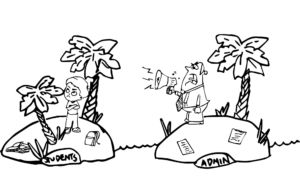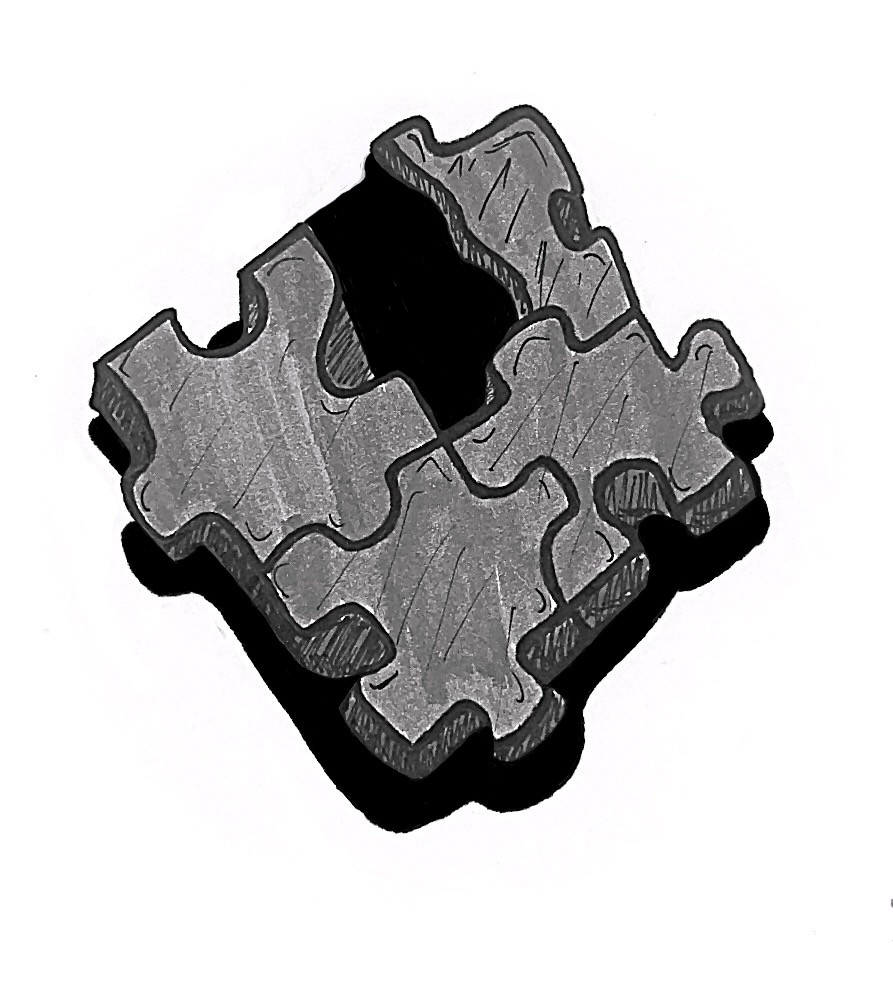When we, as seniors, reflect back on our time at Redwood and the community that we have been a part of for the past four years, what usually comes to mind first are the positive relationships we have made with our fellow students and teachers, even amid the many changes and massive growth that have occurred in our tenure. But as we look back on the connections we’ve made, those we’ve had with the administration don’t conjure up the same warm and fuzzy feelings.
This is evidenced by an April Bark survey in which 42 percent of the student population reported that they do not know the administrative faculty well. Eight percent of students said they’ve never had any interaction with the administrative faculty at all.
As students, and perhaps even more so as upperclassmen, we don’t see administration as people who are on our side. Many students avoid going into the assistant principals’ office, the attendance office and the principal’s office unless they absolutely need to. The problem is that there is such a stigmatized relationship between students and administration. We’ve come to associate the offices and the people working in them as people who are out to get us in trouble, which puts students on the defensive and creates an unnecessary tension in interactions.
When students feel like they are talking to a person who wants to reprimand them, or someone who assumes they are always going to misbehave, it can be difficult to develop a relationship with them. This may be amplified by the fact that we don’t see these faculty members on a daily basis as we do with teachers.

While their actions largely go undetected, the administrative staff are the force behind so many activities and programs that we require. We don’t see the AP tests getting organized and set up, or our schedules being arranged, so we don’t realize that these people are as integral to our education as some of our teachers.
There have been many examples throughout our high school experience when this animosity has come to light. When administration insisted upon the end of many hazing traditions at the rallies, many upperclassmen at the time resisted this change. However, looking back we can see that these are positive changes that have resulted in more respect between classes.
But not all such interactions result in mutual understanding. In the beginning of the year, a parking committee made up of students was assembled by the administration. The goal was to hear student concerns about parking, a heated issue at the time. According to some students in the committee, they met and shared their insight, only to have it be ignored. Many of the things these students suggested were not implemented.
For students, this was was very upsetting. The meetings seemed like a waste of time and they didn’t feel heard. For administrators making the difficult decisions on parking, it was stressful to face the student backlash and anger towards decisions made in the best interest of the entire school. The parking situation amplified the students’ feeling that the administration was not on their side and administration likely faced more rudeness than before.
These challenges surfaced during behavioral talks by the Assistant Principals to warn seniors about the protocol to be a “senior in good standing” early second semester. The APs were met with heckling in place of understanding, and the threat of not walking at graduation remains looming over our heads, making the APs the villains in our final stretch of our high school careers.
Yet strained relationships between students and non-teacher staff are not a foregone conclusion. Walk out into one of the parking lots any day at break and you’ll find students hanging out with the campus supervisors, coming up with secret handshakes and forming friendships. Messy basketball teams and the janitorial staff happily coexist, with students writing them end of the season notes of appreciation.
And so, there’s still hope to mend this tension-filled relationship between students and administrative faculty going forward. For this to happen there needs to be more compromise. Students should become more understanding of the fact that these faculty members are trying to act in our, and the school’s, best interest. At the same time, administration should listen to our input when they ask for it, and work with us to solve problems that involve us. In addition to this, we need to have more regular interactions with these faculty members so that they aren’t just the “office people” at Redwood. We should invite them to participate in more rally activities, greet them in the hallways and create room for conversations that go beyond just taking care of business or dealing with problems.
Students and administration want to live in a community with less stress and more friendly interactions than tense ones; with a little bit more understanding and effort from both students and administration, we could create a more cohesive community.





